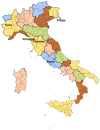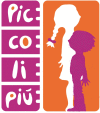Piccolipiù, a multicenter birth cohort in Italy: protocol of the study
- PMID: 24506846
- PMCID: PMC3926689
- DOI: 10.1186/1471-2431-14-36
Piccolipiù, a multicenter birth cohort in Italy: protocol of the study
Abstract
Background: The fetal and infant life are periods of rapid development, characterized by high susceptibility to exposures. Birth cohorts provide unique opportunities to study early-life exposures in association with child development and health, as well as, with longer follow-up, the early life origin of adult diseases. Piccolipiù is an Italian birth cohort recently set up to investigate the effects of environmental exposures, parental conditions and social factors acting during pre-natal and early post-natal life on infant and child health and development. We describe here its main characteristics.
Methods/design: Piccolipiù is a prospective cohort of expected 3000 newborns, who will be recruiting in six maternity units of five Italian cities (Florence, Rome, Trieste, Turin and Viareggio) since October 2011. Mothers are contacted during pregnancy or at delivery and are offered to participate in the study. Upon acceptance, their newborns are recruited at birth and followed up until at least 18 years of age. At recruitment, the mothers donate a blood sample and complete a baseline questionnaire. Umbilical cord blood, pieces of umbilical cord and heel blood spots are also collected. Postnatal follow-up currently occurs at 6, 12, and 24 months of age using on-line or postal self administered questionnaire; further questionnaires and medical examinations are envisaged. Questionnaires collect information on several factors, including mother's and/or child's environmental exposures, anthropometric measures, reproductive factors, diet, supplements, medical history, cognitive development, mental health and socioeconomic factors. Health promotion materials are also offered to parents.
Discussion: Piccolipiù will broaden our understanding of the contribution of early-life factors to infant and child health and development. Several hypotheses on the developmental origins of health can be tested or piloted using the data collected from the Piccolipiù cohort. By pooling these data with those collected by other existing birth cohorts it will be possible to validate previous findings and to study rare exposures and outcomes.
Figures
References
-
- Porta D, Fantini MP. on behalf of the GASPII and Co.N.ER Study Groups. Prospective cohort studies of newborns in Italy to evaluate the role of environmental and genetic characteristics on common childhood disorders. Ital J Pediatr. 2006;32:350–35.
Publication types
MeSH terms
LinkOut - more resources
Full Text Sources
Other Literature Sources
Medical



